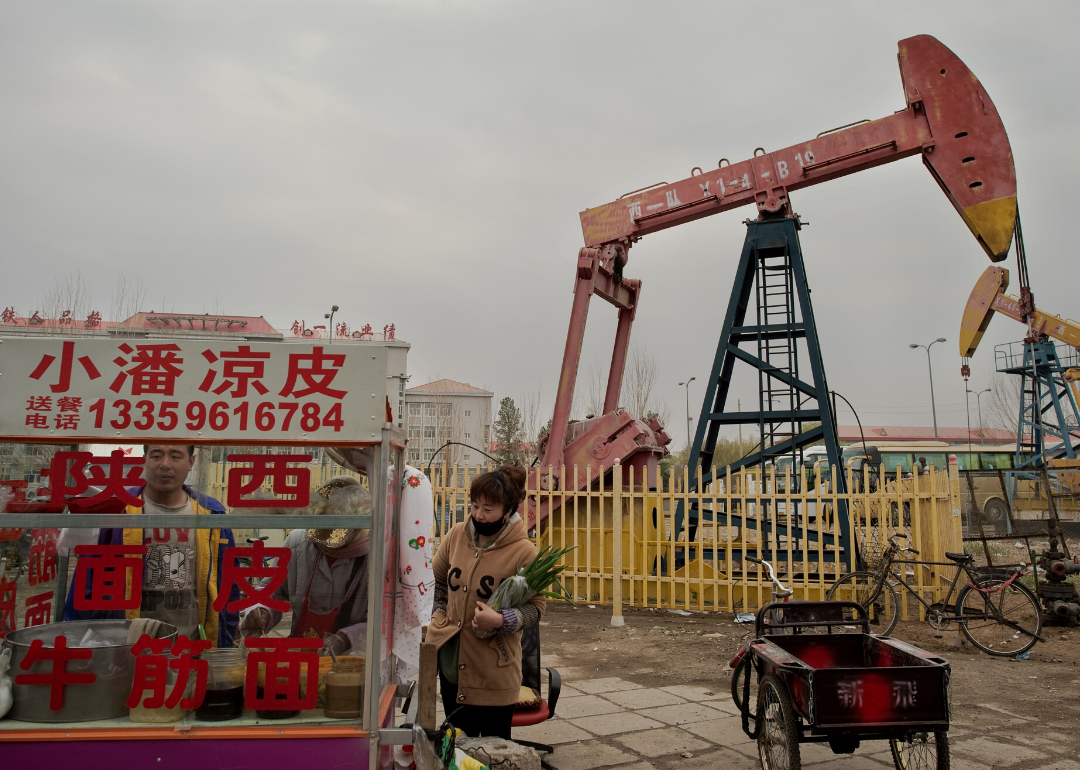
Largest oil fields in the world
Growing climate concerns and commitments to clean energy have done little to curb worldwide oil demand, which in the third quarter of 2019 increased by 1.1 million barrels per day. Experts expect peak oil usage in 2036, with 70% of daily oil usage in the U.S. going toward transportation alone.
To find out where the most oil is being produced globally, Stacker used a variety of sources to create a gallery of the 20 largest oil fields in the world, ranked by oil reserves both past and future. Many of the supergiant fields in our list have found renewed life thanks to technological advances and upgrades that allow for increased extraction. One example is a Russian oil field called Samotlor that once used flooding to push oil closer to the surface—a practice that required 95 barrels of water for every five barrels of oil. Today, that field uses hydrodynamic approaches including hydraulic fracturing and horizontal drilling: maneuvers that have slowed the production decline to just 1%.
The United States is the largest producer and consumer of oil in the world, posting a pair of fields in the top 20 that help contribute to the country’s accounting for 18% of the world’s production.
Although Iran has a combined oil reserve of 158.4 million barrels, sanctions placed on the country by the United States have forced crude oil exports down by more than 80%. The Iranian government in November 2019 announced the discovery of a new 53-billion-barrel field that would be the country’s second-largest.
Not surprisingly, ExxonMobil, BP, and Chevron are spread throughout a number of the fields, while the largest field is owned and operated by the world’s most profitable company, which claimed profits of $111 billion in 2018.
Keep reading to see the 20 largest oil fields in the world, from the deserts of the Middle East to the frozen tundras of Alaska and Siberia.
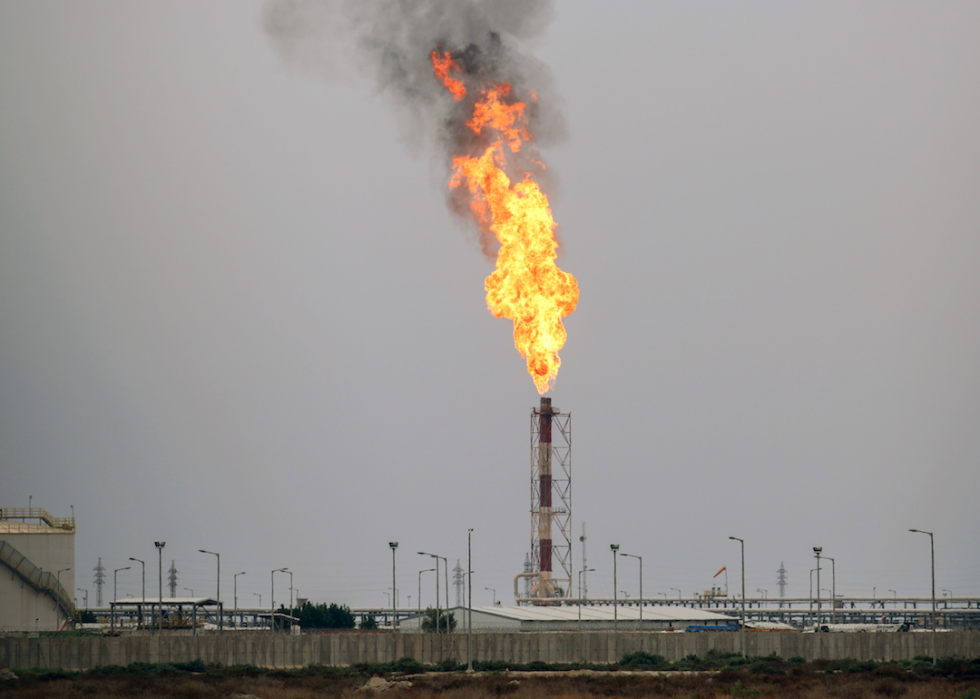
#20. West Qurna Field, Iraq (tie)
- Oil reserves (past and future): 14 billion
The West Qurna 2 Field in southern Iraq is projected to ramp up production by 20% in 2020, to 480,000 barrels per day under the ownership of Russian energy company Lukoil. ExxonMobil, which purchased the rights to develop Phase I of the field in 2009, added new facilities in June 2019 that allows for production of 465,000 barrels per day. ExxonMobil withdrew its employees from the field for two weeks in 2019 after the U.S. removed all non-essential personnel from its embassy in Baghdad, citing threats from Iran.
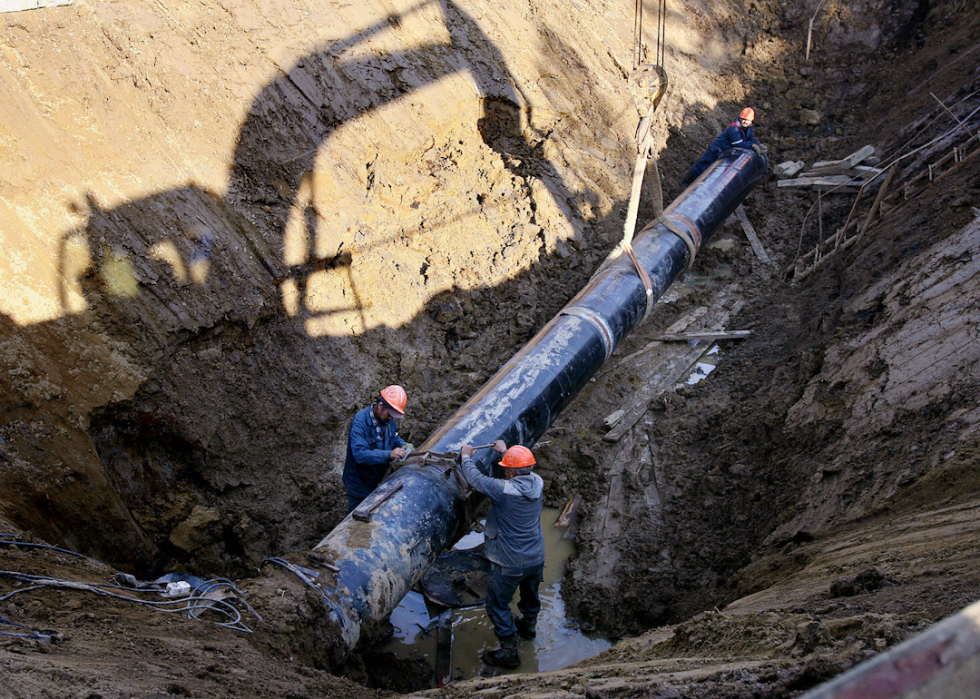
#20. Sakhalin Islands, Russia (tie)
- Oil reserves (past and future): 14 billion
Exxon Neftegas is the primary owner of Sakhalin I, which comprises three oil platforms in the Okhotsk Sea, while Russian-based Gazprom holds a majority in Sakhalin II after the original agreement was denied by the Russian government since no local partner was involved. The Sakhalin I project, which got under way in 2003, is home to nine of the 10 longest wells in the world.
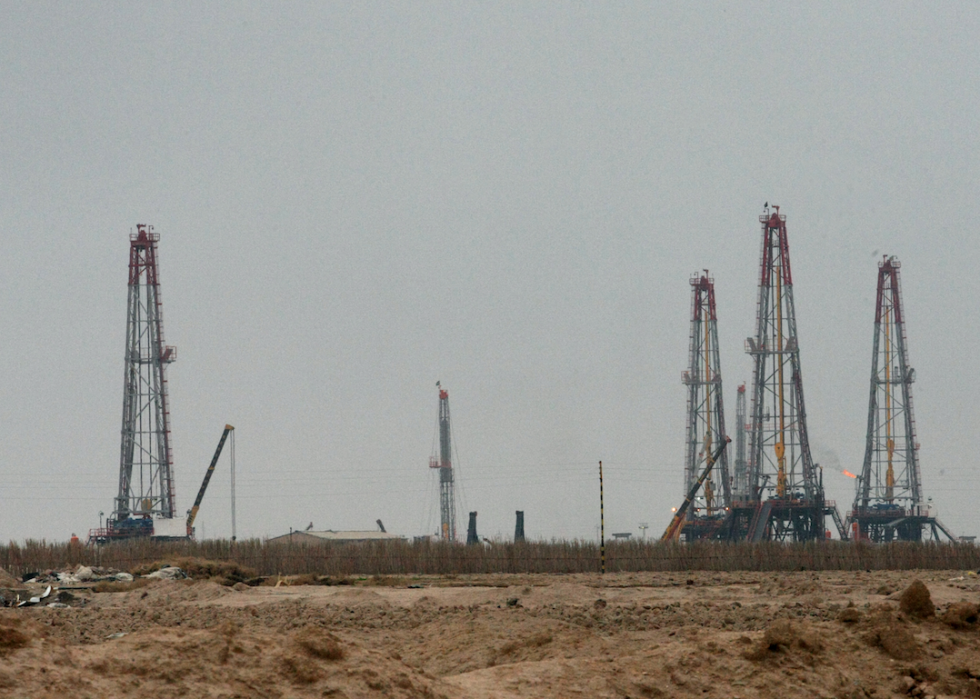
#18. Rumaila Field, Iraq (tie)
- Oil reserves (past and future): 17 billion
The Rumaila Field in Iraq has been In production since 1972, with ownership shifting hands to a conglomerate called the Rumaila Operating Organization, consisting of BP, PetroChina, and the South Iraq Oil Company. In April 2019, the Rumaila Field surpassed the 1.5 million barrels per day mark thanks to upgraded facilities and increased water injections. Rumaila accounts for nearly one-third of Iraq’s total oil supply and is one of the largest fields by area, encompassing nearly 1,000 square miles.
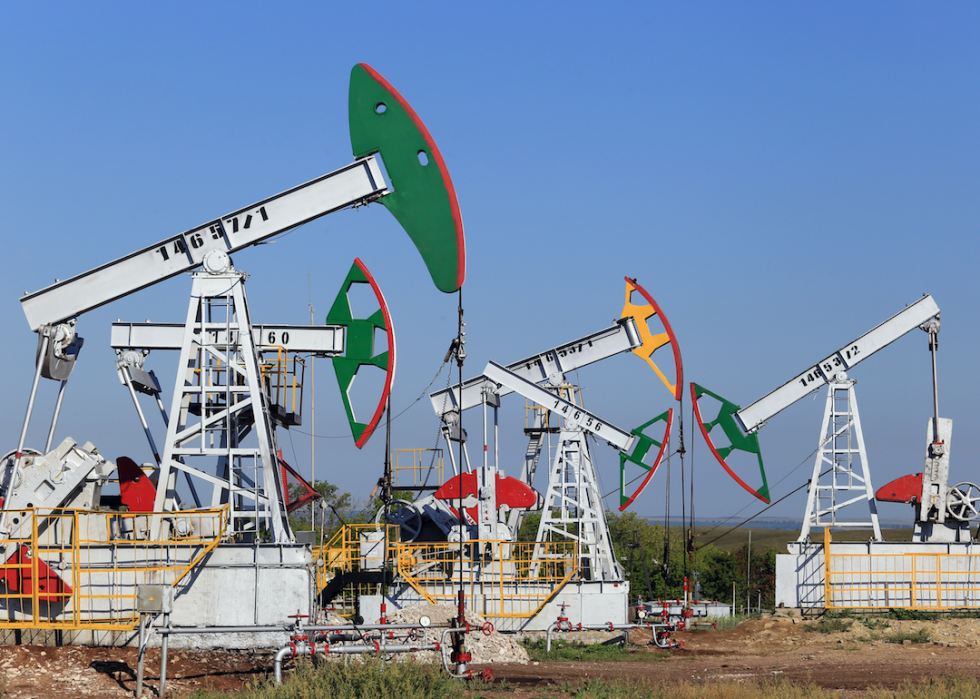
#18. Romashkino Field, Russia (tie)
- Oil reserves (past and future): 17 billion
When it was discovered in 1948, the Romashkino Field represented the largest known oil reserve in the world at 17 billion barrels. Nearly 1,600 square miles, the Romashkino Field has been owned by Tatneft, Russia’s sixth-largest oil company, since its opening. In April 2019, the Romashkino Field’s Druzhba Pipeline was closed down after high levels of contamination were found in the crude, stopping a flow of nearly 1.5 million barrels per day to Western Europe.
[Pictured: Oil pumps in Tatarstan, Russia.]
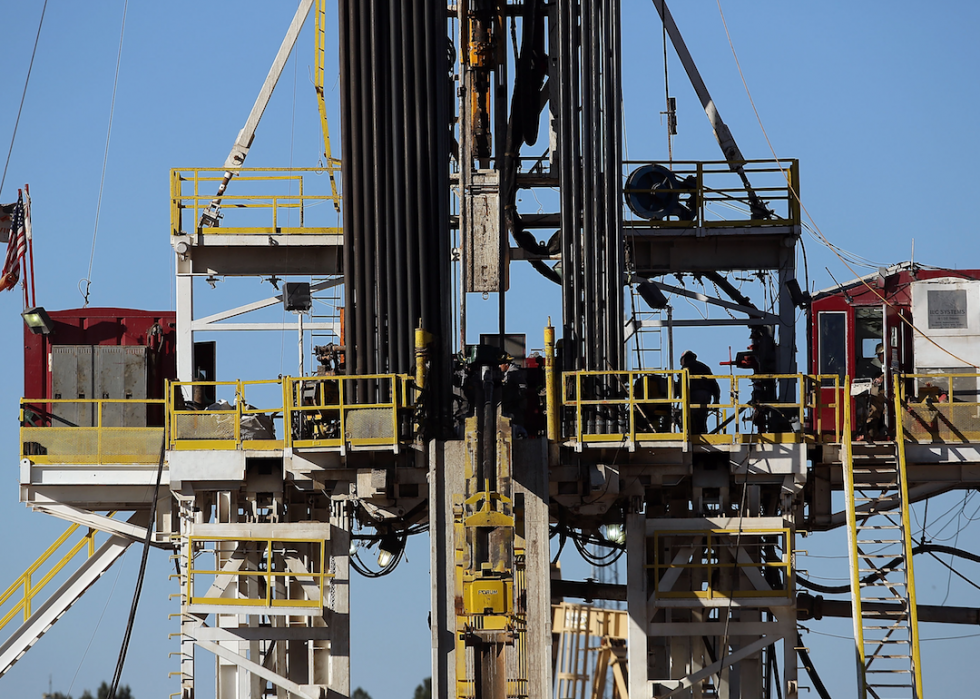
#16. Wolfcamp Shale, United States
- Oil reserves (past and future): 20 billion
The United States Geological Survey deemed the Wolfcamp Shale site in West Texas the largest continuous oil reserve in the country at 20 billion barrels. Combined with the overlying Bone Spring fields in the Permian Basin, an estimated 46 billion barrels could be produced, which would double the country’s reserves. Wolfcamp, operated by the Bureau of Land Management, nearly tripled the 7 billion barrel reserve found in the Bakken-Three Forks field.
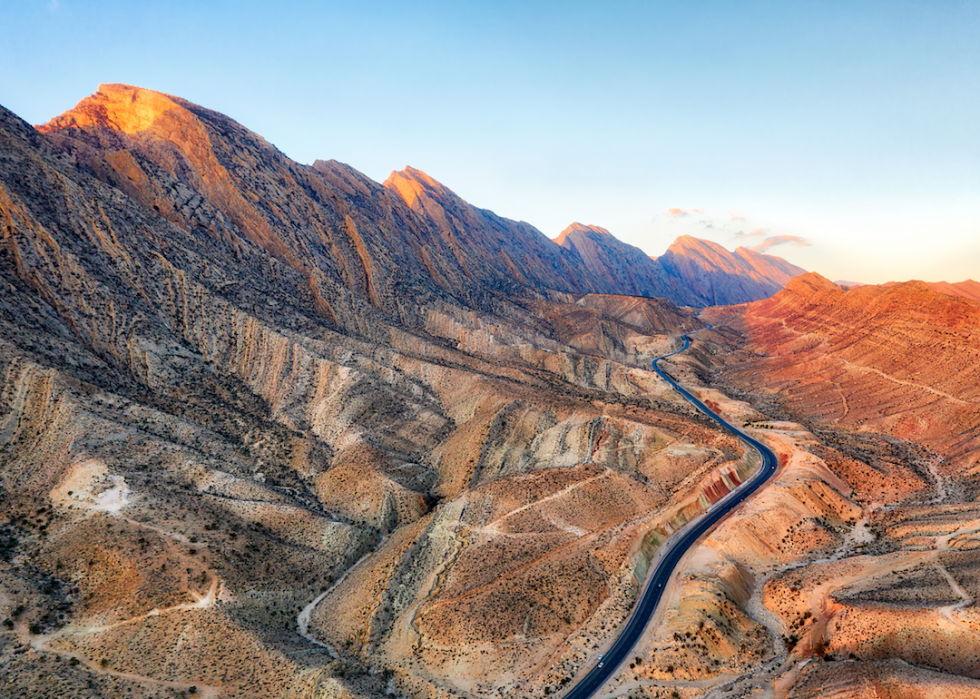
#15. Marun Field, Iran
- Oil reserves (past and future): 22 billion
Iran’s second-largest-producing oil field, the Marun Field has been owned and operated by the state-owned National Iranian Oil Company since its discovery in 1963. The sixth-largest onshore deposit in the world, sanctions against Iran sent oil exports down to just 100,000 barrels per day in July 2019, down from 2.5 million in April 2018. At its peak in the 1970s, Marun was producing more than one million barrels per day.
[Pictured: Road through the Zagros Mountains in Iran near where Marun Field is located.]
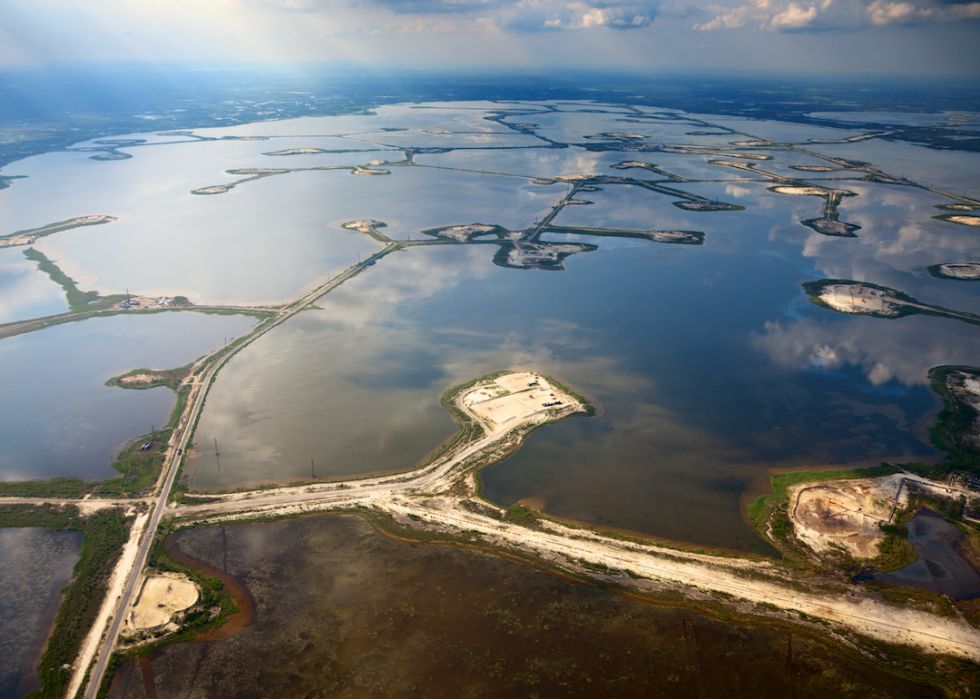
#14. Samotlor Field, Russia (tie)
- Oil reserves (past and future): 25 billion
Samotlor is Russia’s largest oil field, producing nearly 3 million barrels per day at its peak in the 1980s. Rosneft, Russia’s largest oil company, owns and operates the Siberia-based field, which saw profitability fall as it took nearly 95 barrels of water to produce five of oil. New technology has changed that, as the field today utilizes hydrodynamic approaches including hydraulic fracturing and horizontal drilling. These maneuvers that have slowed the production decline to just 1%.
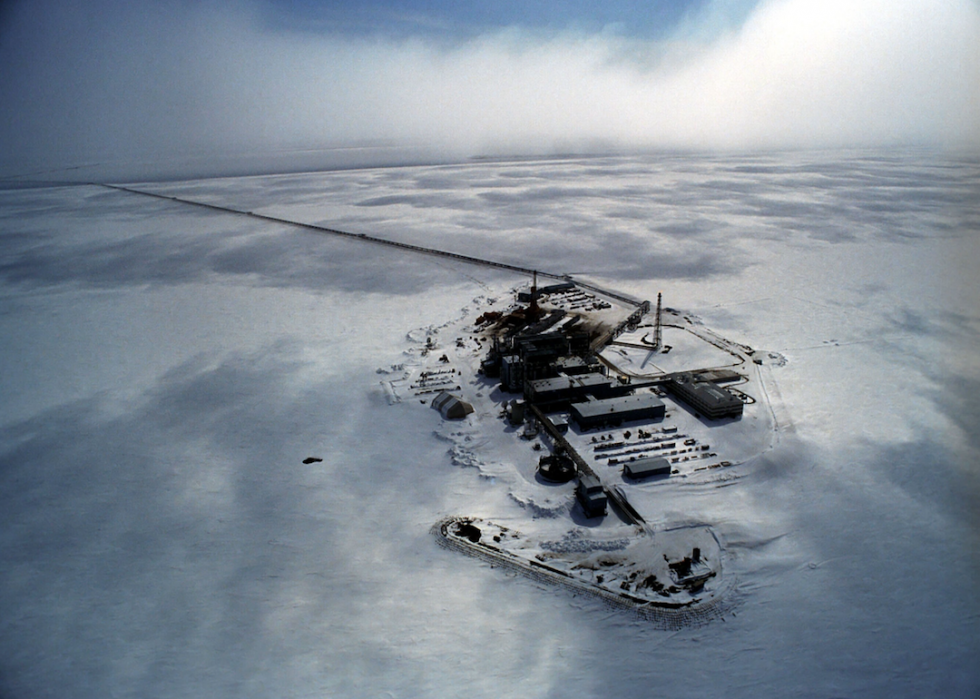
#14. Prudhoe Bay, United States (tie)
- Oil reserves (past and future): 25 billion
In service for over 40 years, Alaska’s Prudhoe Bay oil field is the biggest in the U.S., with more than 800 active wells. ConocoPhillips owns the largest stake in Prudhoe at 36%, while BP, which operates the field, announced in August 2019 it was looking to sell its stake in Prudhoe and the Trans-Alaska Pipeline after 40 years. In June 2019, Alaska’s North Slope saw production fall to its lowest level since 1977.
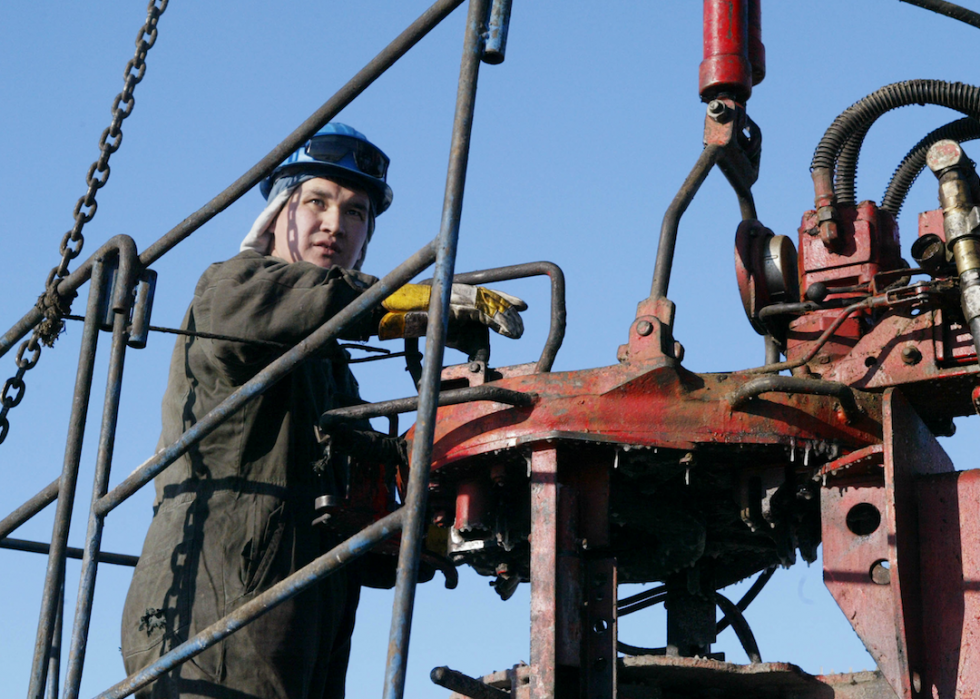
#12. Tengiz Field, Kazakhstan
- Oil reserves (past and future): 26 billion
Chevron owns a 50% stake in the field, which is undergoing a massive construction effort that could raise the daily output of the facility to nearly a million barrels by 2022. That deadline may have taken a hit in June 2019 when a fight between hundreds of employees left 40 people injured. The cost of the expansion was estimated at $45.2 billion, though Kazakhstan’s energy minister called for a review by Chevron and ExxonMobil to lower costs in November.
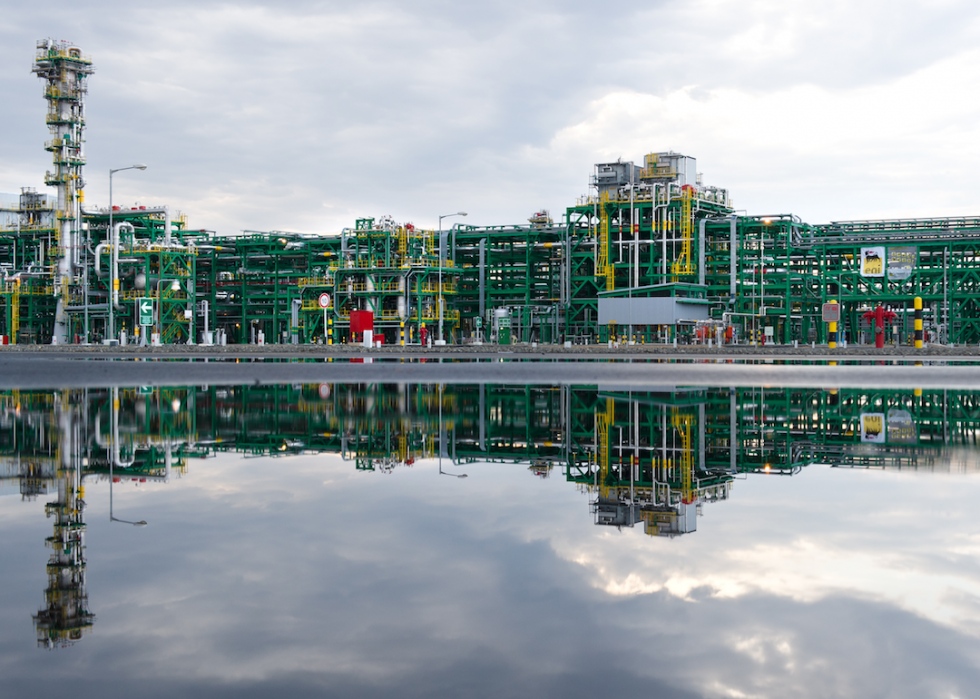
#11. Kashagan Field, Kazakhstan
- Oil reserves (past and future): 30 billion
The shallow water, offshore Kashagan Offshore Oil Field represents the largest foreign investment in Kazakhstan, with KazMunaiGas, Shell, Total, Eni, ExxonMobil, CPNC, Inpex combining for the $55 billion project. In the early part of 2019, Kashagan reached its target goal of 380,000 barrels per day for the first time since beginning production in 2016. Kashagan Phase I actually began production in 2013, but gas leaks and defects in the facility’s pipeline forced a three-year delay.
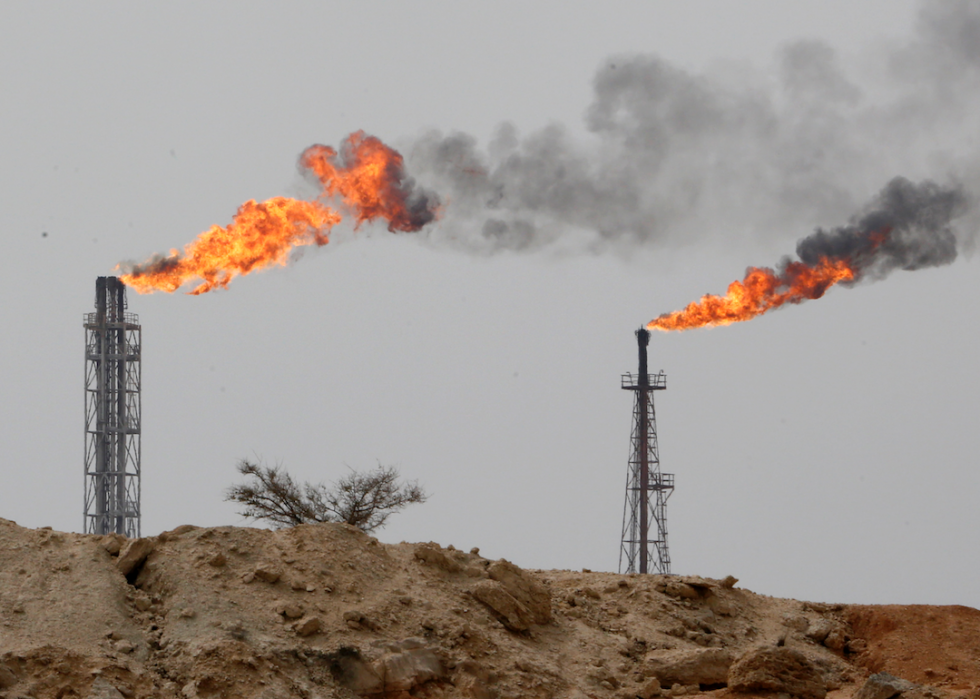
#10. Aghajari Field, Iran
- Oil reserves (past and future): 30.2 billion
Discovered in 1938, Iran’s Aghajari Field is one of the oldest fields on this list and is owned by the National Iranian Oil Company. Sanctions have limited Iran’s trading partners for oil down to China and Syria, with Aghajari producing just 200,000 barrels per day in 2019. That production is down from 440,000 barrels in 2017 when the pipeline that services Aghajari was one of two bombed by Arab separatists.
[Pictured: An oil facility in the Khark Island, on the shore of the Gulf.]
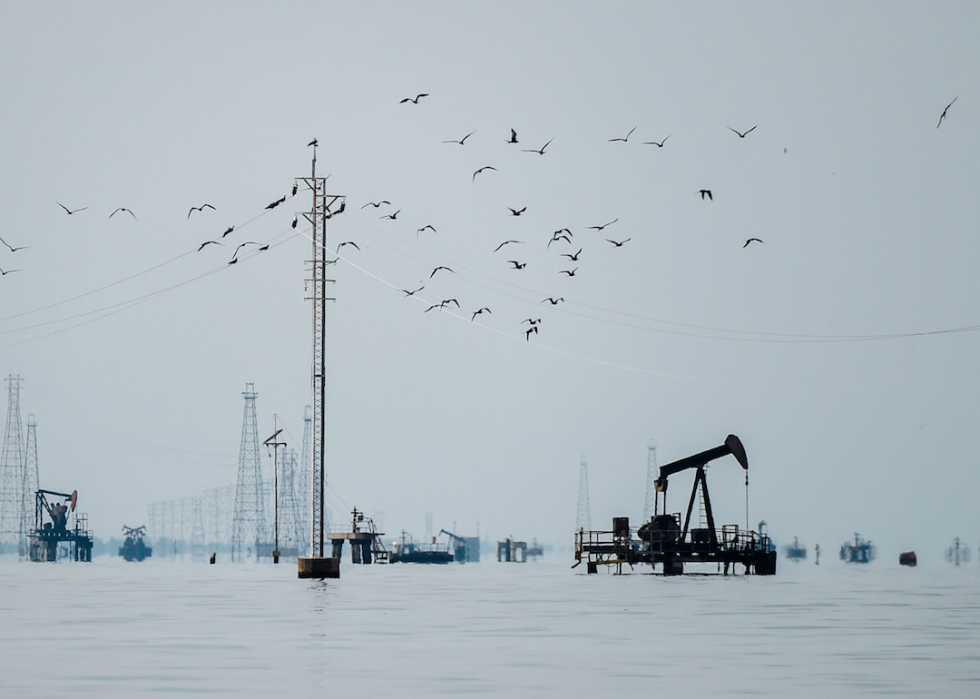
#9. Bolivar Coastal Field, Venezuela
- Oil reserves (past and future): 32 billion
The Bolivar Coastal Field is Venezuela’s largest, and one of the oldest oil fields in the world since its discovery in 1917. Of the edge of Lake Maracaibo, the facility produced nearly 3 million barrels per day in 2006, but civil unrest and sanctions have reduced the country’s oil exports to its lowest level in 75 years. Venezuela, which has the largest oil reserves in the world, is expected to see further drops in production during 2020.
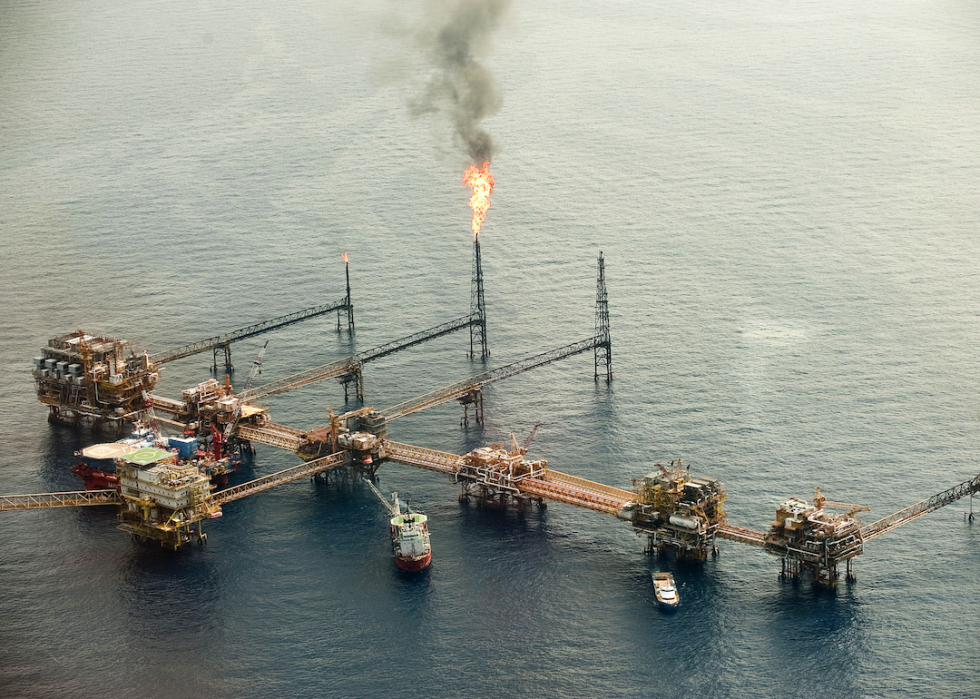
#8. Cantarell Field, Mexico
- Oil reserves (past and future): 35 billion
The Cantarell Field formed as the result of a meteor strike and was discovered in 1972 by fisherman Rudesindo Cantarell in the Gulf of Mexico. Composed of four fields, production at Mexico’s largest oil reserve has fallen steadily over the past 20 years, though nitrogen injections have helped increase outputs. Owned and operated by state-run Pemex, Cantarell was surpassed in 2009 as the country’s biggest oil producer.
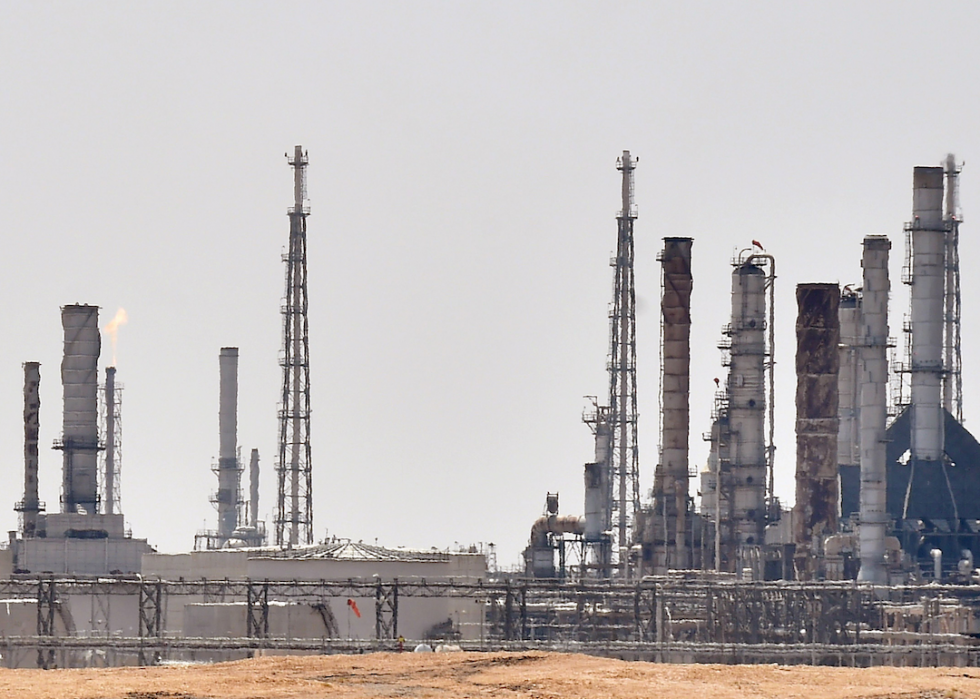
#7. Safaniya Oil Field, Kuwait / Saudi Arabia
- Oil reserves (past and future): 37 billion
Owned and operated in the Persian Gulf by state-run Saudi Aramco, Safaniya is the largest offshore oil field in the world. The platforms and servicing facilities are undergoing upgrades to help Safaniya sustain its output capacity, which is north of 1 million barrels per day. For political and environmental reasons, two oil fields in the neutral zone between Kuwait and Saudi Arabia were shut down in 2014. The two countries agreed to reopen the two fields, and their 500,000 barrels per day capacity, in December 2019, with Chevron gaining the rights to half the production from the fields.
[Pictured: An Aramco oil facility near al-Khurj.]
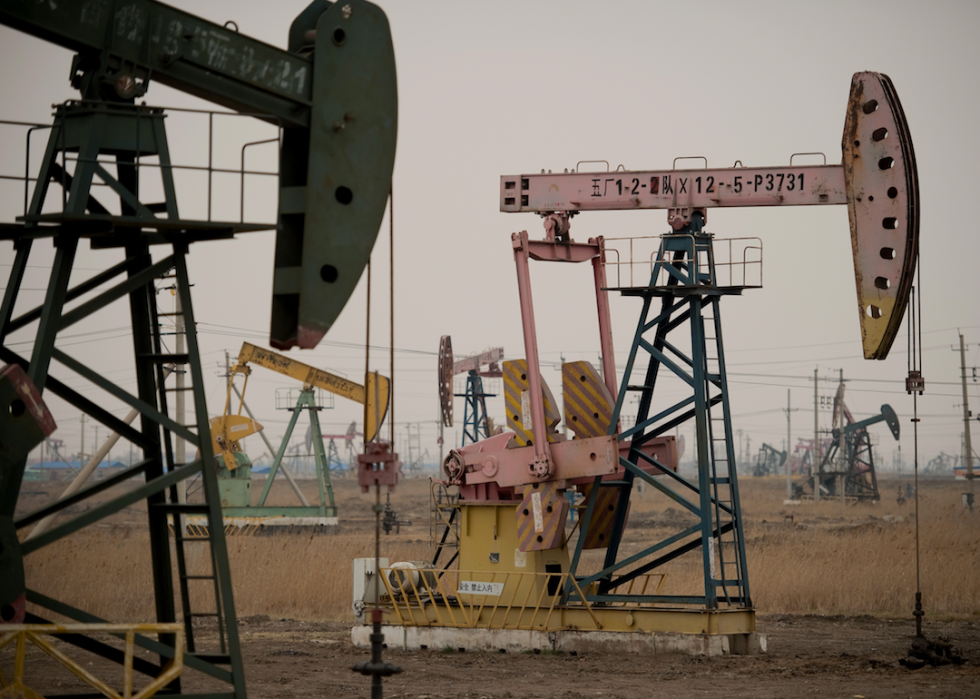
#6. Daqing Field, China
- Oil reserves (past and future): 42 billion
China’s largest oil field went into full-scale production in 1963 after its discovery in 1959, and today accounts for nearly one-third of the country’s overall crude output. Since 2008, oil output in the field has fallen by nearly 20% while PetroChina, the field’s operator, was rocked by scandal in 2013 and disaster in 2015. Despite falling oil outputs, Daqing Field saw an increase in natural gas output in 2018.
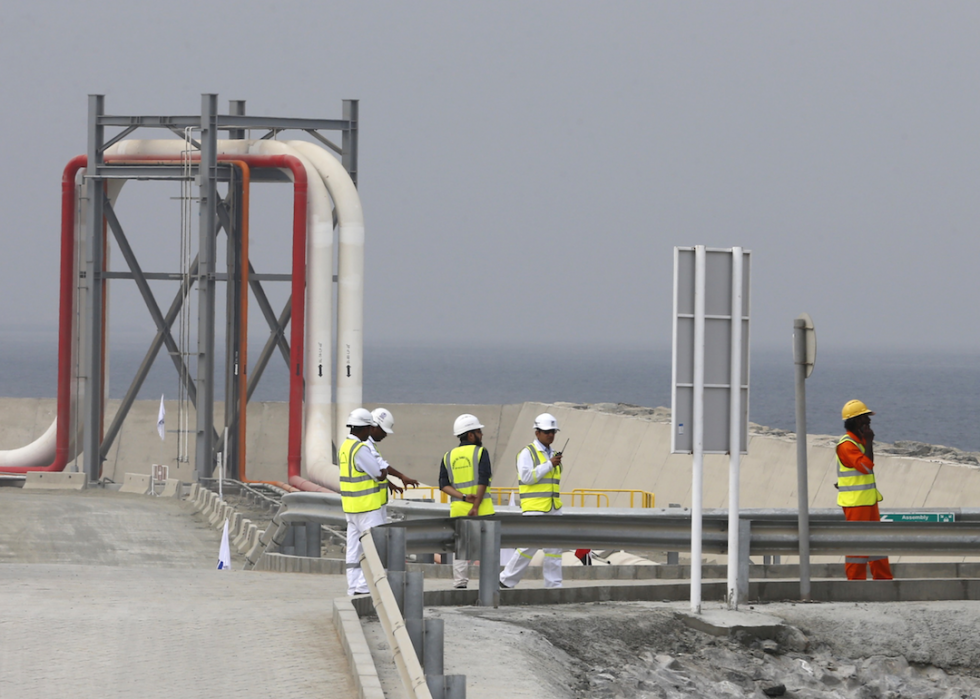
#5. Upper Zakum Oil Field, UAE
- Oil reserves (past and future): 50 billion
Zakum Development Company operates the world’s second-largest offshore oil field, with ownership held by ADNOC, ExxonMobil, and the Japan Oil Development Corporation. A $10-billion construction project currently underway aims to raise production of the facility to one million barrels per day by 2024. The oil field comprises four man-made islands, the largest measuring at about 135 football fields.
[Pictured: A pipeline at the oil terminal of Fujairah in the United Arab Emirates.]
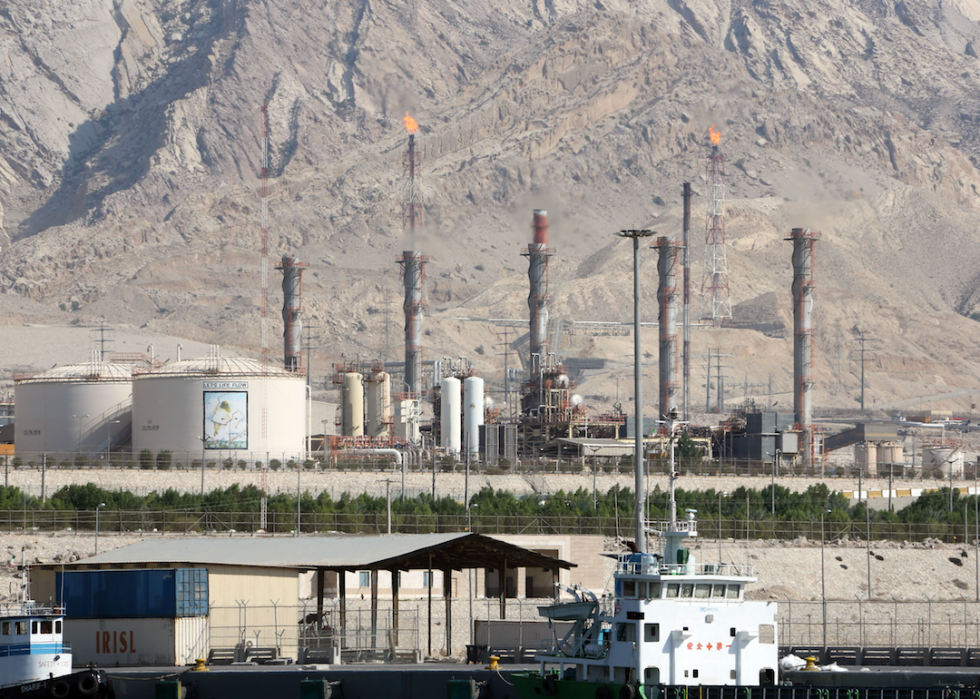
#4. Gachsaran Field, Iran
- Oil reserves (past and future): 52.9 billion
The National Iranian Oil Company owns Iran’s second-largest oil field, with reserves at 52.9 billion barrels and production at 560,000 per day. Iran increased productivity and reduced environmental impact at Gachsaran, which has been in operation since 1930, by using devices to eliminate oil burnoff and potential spills. The Iranian government also announced in August 2019 that the fields in southern Iran, including Gachsaran, would reduce flare gas waste to zero by 2022.
[Pictured: South Pars gas field facilities in the southern Iranian port town of Assaluyeh.]
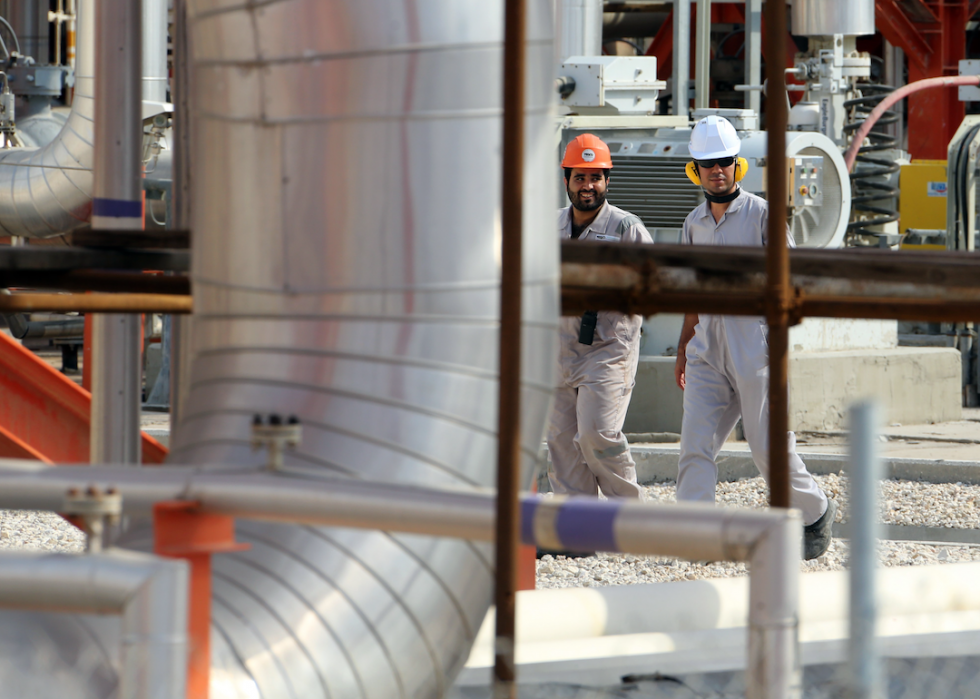
#3. Ahvaz Field, Iran
- Oil reserves (past and future): 65 billion
Ahvaz has been in operation since 1954 and, like other fields in the country, is owned by the National Iranian Oil Company. The facility, which was producing 750,000 barrels per day in 2016, is open to foreign investment from China or Russia amid U.S. sanctions against Iran. Ahvaz remains the country’s largest oil field, even considering Iran’s announcement of the discovery of a 53-billion-barrel field in 2019.
[Pictured: South Pars gas field facilities in the southern Iranian port town of Assaluyeh.]
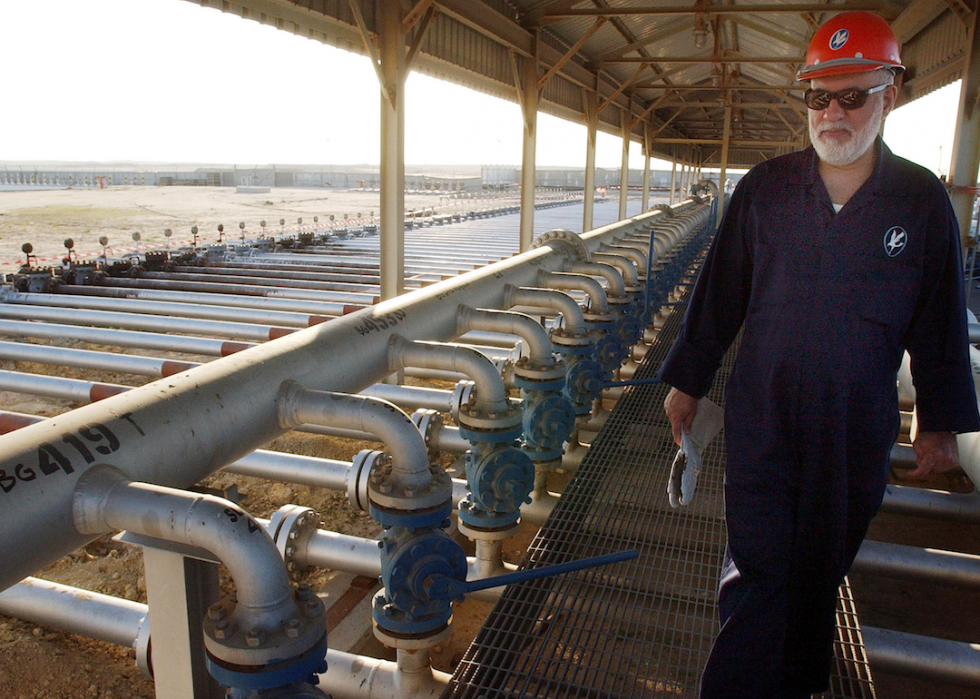
#2. Burgan Field, Kuwait
- Oil reserves (past and future): 67.2 billion
The world’s largest sandstone oil field, Burgan produced nearly 1.68 million barrels per day in 2018, down slightly from 2017. Owned and operated by the Kuwait Oil Company, the Greater Burgan Field accounts for nearly half of the country’s oil production. During the first Gulf War, retreating Iraqi soldiers set nearly 600 of Burgan’s wells on fire that burned for seven months.
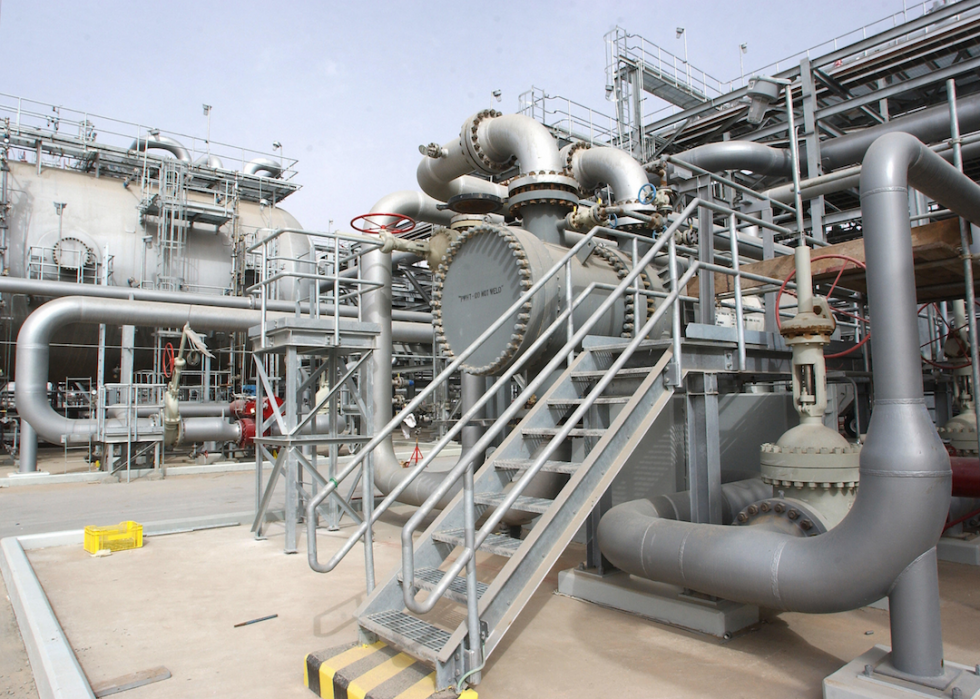
#1. Ghawar Field, Saudi Arabia
- Oil reserves (past and future): 96 billion
The largest oil field in the world in both reserves and daily production, Ghawar spans more than 2,000 square miles, an area slightly larger than Delaware. State-run Saudi Aramco owns and operates the field, and was revealed as the most profitable company in the world in 2018, with $111 billion in profits. Down from its peak of five million barrels per day, Ghawar still rolls out nearly four million per day, accounting for nearly 6% of the world’s daily output.



